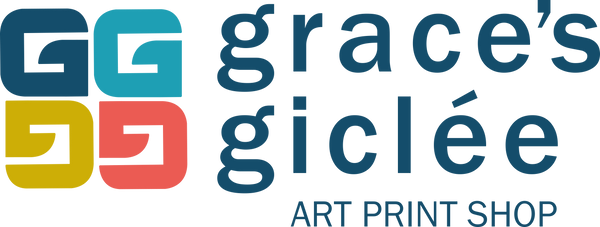For this theme of the month blog, we're diving into the vibrant world of colour and its significance in art. Colour is more than just a visual element; it is a powerful tool that artists use to influence artistic expression, evoke deep emotions, and tell compelling stories. This month, we'll explore how various artists use colour in unique ways to create dynamic and evocative works.
Picasso's Blue Period
Pablo Picasso's Blue Period (1901-1904) is a prime example of how colour can evoke deep emotion. This phase of Picasso's work was marked by a monochromatic palette of shades of blue and blue-green, reflecting his feelings of sadness and despair. These colours are used to convey themes of poverty, loneliness, and suffering. The Blue Period paintings serve as a form of social criticism, highlighting the struggles of the poor. By limiting his palette to mostly blues, Picasso was able to create a haunting and melancholic atmosphere that resonates with viewers on an emotional level.

Frank Bowling's Colourful Layers
Frank Bowling's approach to colour is vastly different from Picasso's. Bowling's works are characterised by their vibrant use of colour, layered to create complex textures and effects. He splashes, drips, and smudges the paint to construct his abstract pieces, each layer adding depth and energy to the artwork. Bowling's use of colour is not just about aesthetic appeal; it's a method of storytelling and emotional expression. His art demonstrates how colour can be manipulated to evoke various feelings and responses from the audience, making colour an integral part of the piece.

Rafael E.M.'s Energy through Colour
Similarly, contemporary artist Rafael E.M. uses colour to infuse energy into his works. His technique involves paint pouring, which creates dynamic and fluid compositions. The vibrant colours and the flowing nature of the paint result in pieces that are lively and full of movement. Rafael's work demonstrates how the strategic use of colour can enhance the mood and message of an artwork, making it an essential element in the creation of an energetic and engaging visual experience.
Yves Klein's 'KB 79'
In contrast to the colourful approaches of Bowling and Rafael, Yves Klein's 'KB 79' showcases the power of a single colour. This solid ultramarine blue, known as International Klein Blue, was inspired by Klein's trip to the beach in 1946. Lying on the beach and looking at the sky, Klein felt a profound connection to the colour blue. His work with this singular shade demonstrates that a single, carefully chosen colour can be as powerful as a multi-hued palette.

Tracey Patterson's Expressive Colours
Artists like Tracey Patterson use expressive, vivid colours to convey energy and memories rather than to represent true life. The colours in her pieces, some of which we've printed in our studio, are chosen to evoke the emotions and energy of her subjects.



